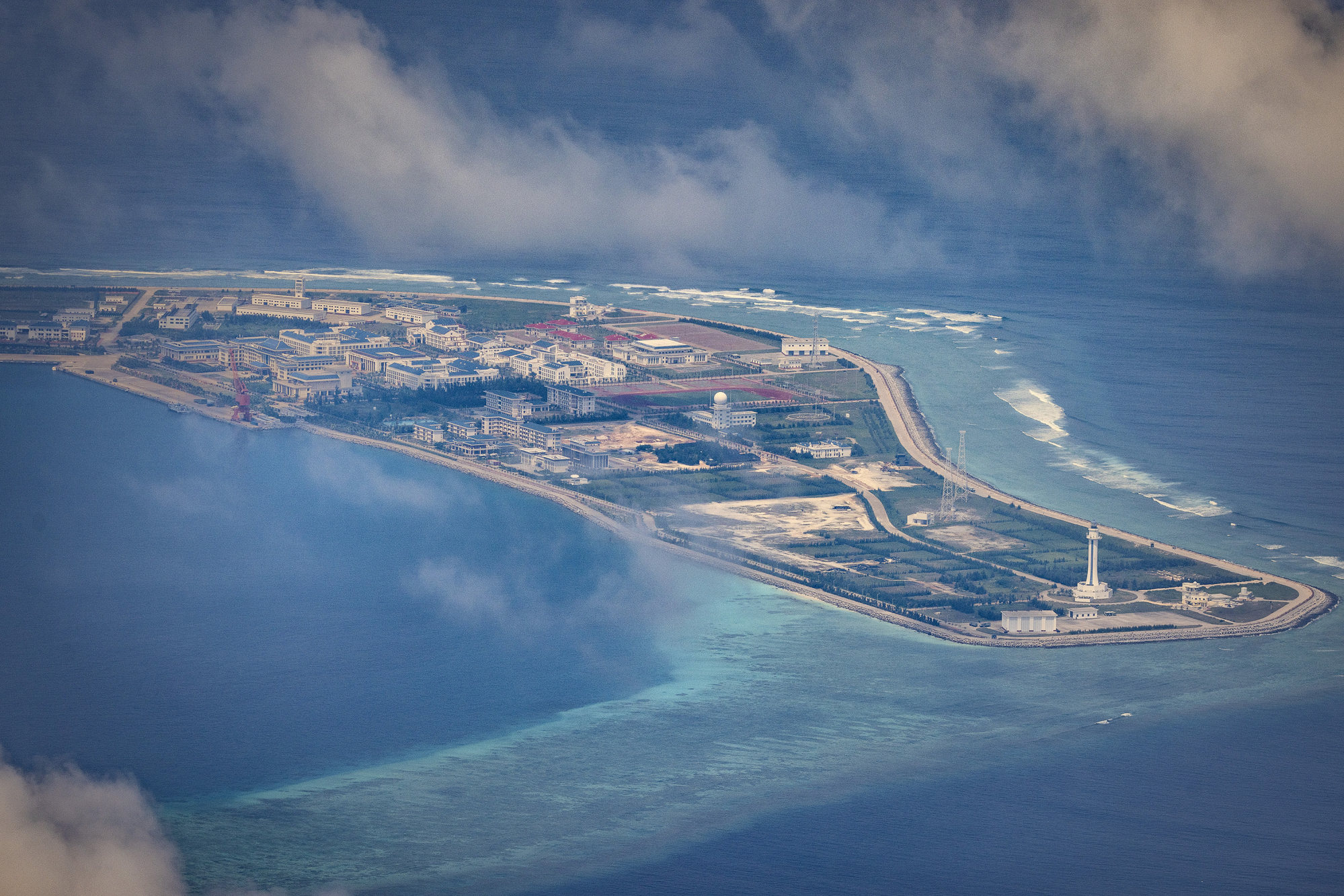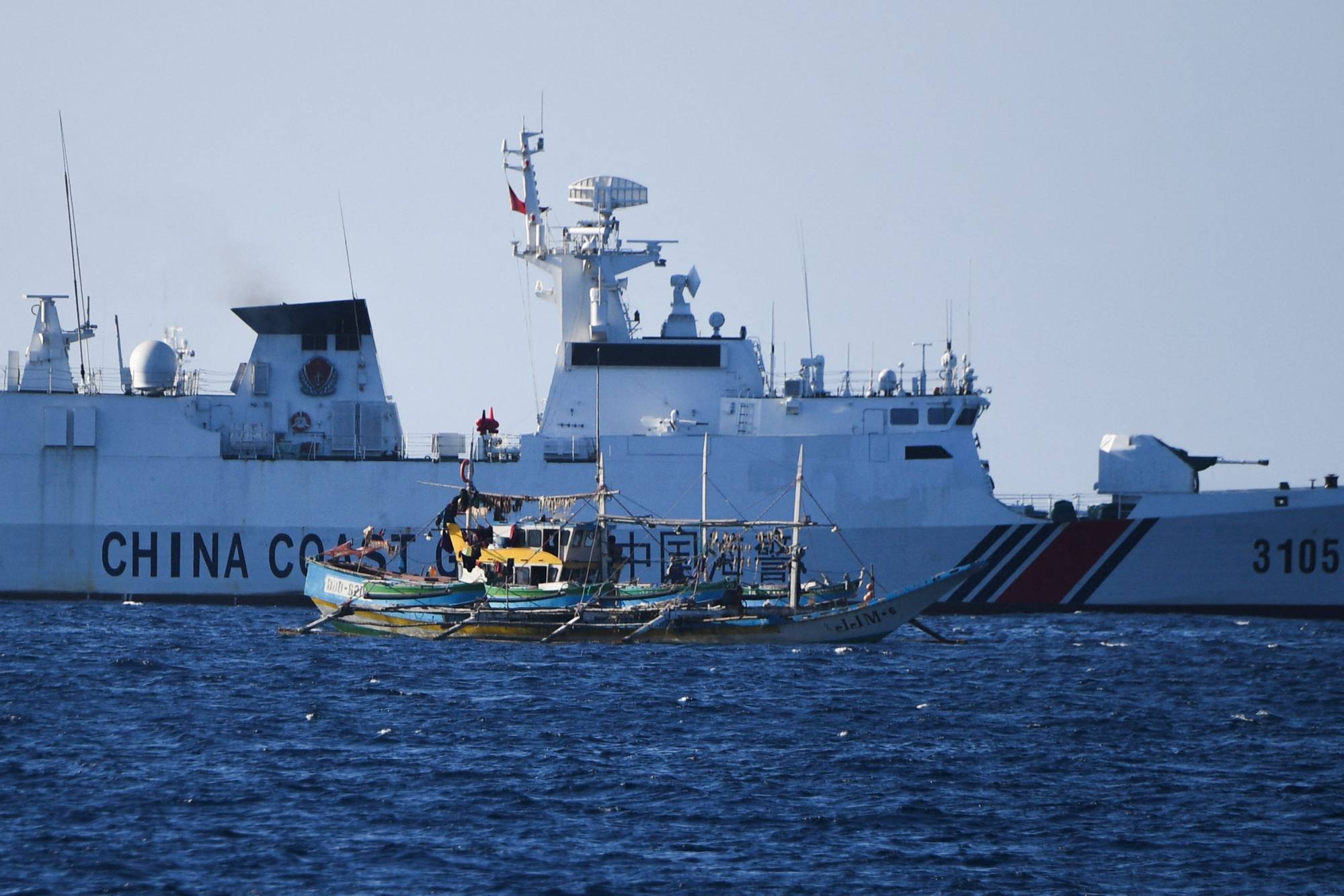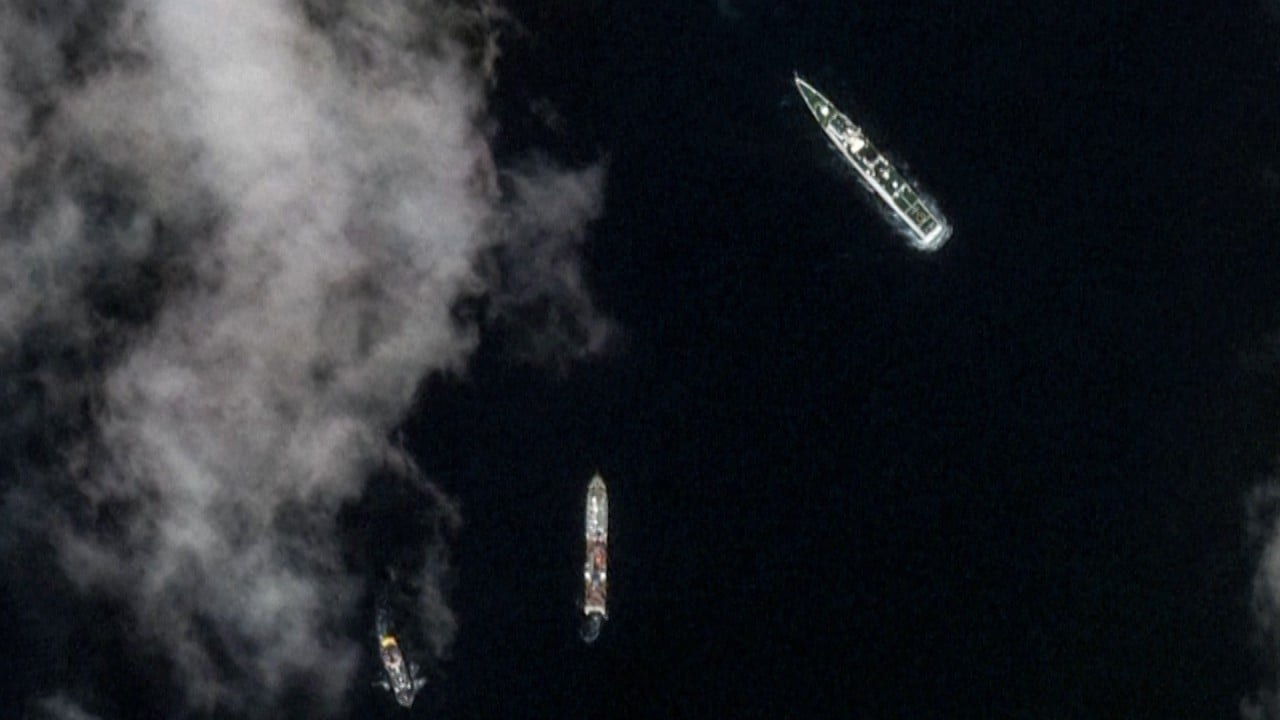
Can UN’s high seas treaty save South China Sea’s ecosystem, or will it lead to more bilateral tension?
- The high seas are in a state of ‘lawless wilderness’ due to a lack of mutually agreed rules to curb overexploitation and pollution
- The high seas pocket in the centre of the South China Sea would be good for setting up a marine protected area but could be difficult due to territorial claims
The Biodiversity of Areas Beyond National Jurisdiction Treaty, currently awaiting ratification by 60 countries, aims to protect marine biodiversity in the “high seas”, the maritime area beyond the jurisdiction of any state. High seas are estimated to comprise nearly half (45.4 per cent) of the earth’s surface water.
US alarm at Chinese boats’ sewage in South China Sea
In addition to regulating activities like fishing and mining to support the sustainable use of ocean resources, one of the treaty’s key provisions involves the creation of “marine protected areas” (MPAs) to “protect, preserve, restore and maintain biological diversity and ecosystems”.
The high seas pocket located in the centre of the South China Sea would be a good candidate for setting up an MPA, marine ecologist John McManus told This Week in Asia. McManus called such protected areas in and outside the high seas “peace parks”, before the High Seas Treaty was signed last year and codified the term MPA.
“Many of us [scientists and environmentalists] have long supported the idea of setting aside areas, such as the Spratly Islands and Scarborough Shoal, as peace parks,” said Dr McManus, a professor of marine ecology in the Rosenstiel School of Marine, Atmospheric, and Earth Science at the University of Miami.
He pointed to the Turtle Islands peace park that involved Malaysia and the Philippines, where fishing would continue with limitations to prevent stock collapses. “Support for these peace parks is quite high among the scientists and most of the governments of the region. However, the Chinese government has apparently not seriously considered the approach.”
But setting up a peace park or MPA would be challenging due to competing territorial claims in both places. It might be easier to set up one in the high seas of the South China Sea, McManus said, where only commercial fishing boats fish due to its great depths of over 4,000 metres.
He described this area as a “kite-shaped portion of the central South China Sea” located more than 200 nautical miles from the exclusive economic zone (EEZ) allotted by the United Nations Convention of the Law of the Sea (Unclos) to any of the coastal states.
McManus – who has studied reefs in the South China Sea for nearly two decades – underscored the urgency of protecting the South China Sea’s ecosystems from further degradation, given that the region supplies 12 to 20 per cent of the world’s fish landings.
“The situation has indeed worsened significantly,” he said, even worse than in 2016 when he said “what we’re looking at [in the South China Sea] is potentially one of the world’s worst fisheries collapses ever”, with hundreds of species in danger of economic extinction.
At that time, he had calculated that if fish catch was not properly managed and reefs were not protected from illegal fishing and clam-digging damage, some 38 million people depending on the South China Sea for food may go hungry.
It was crucial to protect the high seas of the South China Sea from oil spills, leakages resulting from any oil drilling as well as from deep sea fishing, he said.
He pointed out that locating an MPA in the high seas could skirt much of the problem of the many competing claims of sovereignty in the South China Sea, since “this designation would make the absolute determination of sovereignty unnecessary, as they would be jointly managed”.


Carpio expects the treaty to go into force next year after it is ratified by nations including China, although he said Beijing would declare it does not apply to the South China Sea.
In September last year, the principal claimants in the South China Sea – China, the Philippines and Vietnam – signed the treaty. Singapore is the only other Asean state that has signed as well.
If many countries did this, “China will be isolated”, he said.
These countries may be hesitant to make such an open declaration, although they are quietly for it, due to the “possible reaction of China”, he said.
‘These are red lines’: Philippines won’t let China remove disputed shoal outpost
Even if Manila does not push for the clause, Unclos – which provides the underlying legal framework for the High Seas Treaty along with the 2016 arbitral ruling – supports the idea that the South China Sea has a high seas portion and that China’s claims are “excessive”, he said.
“But the way things are going, there is a high likelihood the Philippines may insert that [clause] … and canvass the support of partners and allies.”
Tension has been rising in recent months between the two countries as their vessels have collided on several occasions and their officials have publicly traded harsh words and blame.
Before Manila signed the High Seas Treaty last year, Philippine Justice Secretary Jesus Crispin Remulla in June revealed Manila was building a case against China after it had surveyed “severe damage” to the Rozul Reef and Escoda Shoal caused by Chinese vessels.
The High Seas Treaty would not cover damage to these areas since they fall within the Philippines EEZ, both Carpio and Pitlo said.
Still, Pitlo expressed hope that, despite the rising animosity between the two countries, “if China would reach out to the Philippines to pursue practical cooperation, this [high seas pocket] could be where such collaboration can take place.
“China and other claimants may sign up for such cooperation, while putting caveats that such cooperation does not prejudice their maritime claims or position in the disputed sea.”



